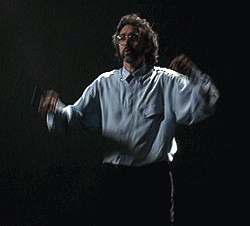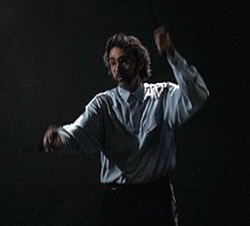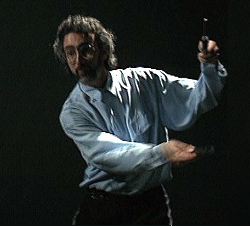Buchla Lightning, digital synthesis and audio processing, multi-image projection
The Far and Brilliant Night explores the psychological power of combined aural and visual symbolism. Perhaps there are certain classes of sounds and images which are imprinted on our genetic memories, or which exist in our collective unconscious. They may stir within us memories from ancient times, from before our birth, or even from before the origin of our species. But far from creating a universal experience, the primitive and deep associations that these sounds and images invoke may clash with or intensify each individual's current emotions, thoughts, and anxieties, creating a unique and unpredictable experience for each person.
Designed by synthesizer pioneer Don Buchla, the Lightning is a specialized controller that senses the movement of hands in space and transforms this information into MIDI signals for control of electronic musical instrumentation. The device senses a wide range of movements including conducting, percussion, and dance. Its primary function in this work is to perform changes in the parameters of real-time computer algorithms. The algorithms in turn control signal processing routines that transform triggered digital recordings and live vocal sounds into expressive music.





The Far and Brilliant Night in its current version premiered at a concert held in conjunction with the 1992 International Computer Music Conference in San Jose, California. Other performances include the International Symposium on Electronic Art in Montreal, the Quandt Foundation Transatlantic Conference, and the Northwest Electroacoustic Music Festival.
In these performances the Lightning was performed by percussionist Mark Goldstein (pictured).